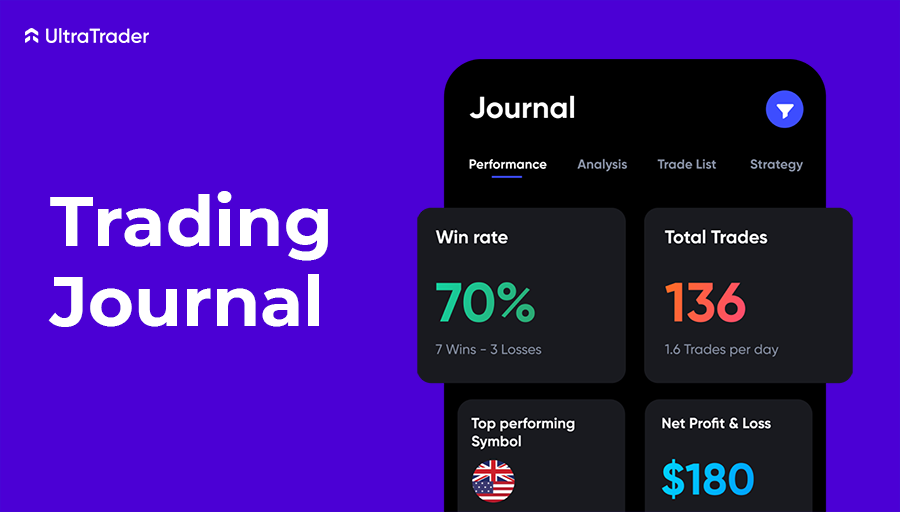Introduction: Understanding the Impact of Emotions on Trading
In the intricate world of financial markets, the role of emotions in trading cannot be overstated. Often, the difference between success and failure lies in how well traders manage their emotional responses. This aspect of trading, known as trading psychology, is crucial for anyone looking to navigate the market effectively. Whether you’re dealing in stocks, bonds, or forex, understanding how to control emotions in trading is a pivotal skill.
Our emotions can either be our greatest ally or our most significant hindrance. They influence every decision we make, often subconsciously. Learning to control these emotional impulses is essential in trading, where every decision can have immediate financial consequences. This introductory guide aims to provide practical trading psychology tips and forex trading psychology tips to help you harness your emotions, thereby enhancing your trading strategy.
The Role of Emotions in Trading Decisions
When discussing emotions in trading, it’s important to acknowledge their dual nature. On one hand, emotions like fear can lead to hasty decisions, such as selling off an asset too soon. On the other hand, greed can drive traders to hold onto assets for too long, hoping for an even greater profit, often leading to significant losses. Understanding and managing these emotional responses is a cornerstone of effective trading psychology.
The first step in mastering trading psychology is recognizing your emotional triggers. What causes you to deviate from your trading plan? Is it the thrill of a potential win, or the fear of losing? Identifying these triggers is the first step in developing strategies to control them.
In the next sections, we will explore tips and strategies that can aid in controlling emotional responses, thus enhancing decision-making in trading scenarios. Remember, while the market may be unpredictable, your response to it doesn’t have to be.
Tip 1: Establish a Trading Plan

A well-defined trading plan is a cornerstone of successful trading and is instrumental in managing emotional decisions. This plan acts as a blueprint, guiding your actions and helping to prevent impulsive decisions driven by fear, greed, or other emotional responses. It provides a structured approach to trading, ensuring that each decision aligns with your predetermined strategy, goals, and risk tolerance levels. By adhering to a trading plan, you remove a significant amount of emotional guesswork, leading to more disciplined and rational trading.
Steps to Create an Effective Trading Plan:
- Define Your Trading Goals: Start by clarifying what you want to achieve through trading. This could be financial independence, additional income, or simply learning new investment strategies.
- Assess Your Risk Tolerance: Understand how much risk you are willing to take. This includes determining the amount of capital you can afford to lose and how much volatility you can handle emotionally.
- Choose Your Trading Style: Whether it’s day trading, swing trading, or long-term investing, choose a style that suits your goals and lifestyle.
- Set Entry and Exit Rules: Clearly define the criteria for entering and exiting trades. This could be based on technical analysis, fundamental analysis, or a combination of both.
- Develop Money Management Rules: Decide how much of your portfolio you will risk on a single trade and how you will protect your capital from significant losses.
- Review and Adapt: Regularly review your trading plan to ensure it remains aligned with your goals and market conditions. Be prepared to adapt it as you gain more experience and insights.
Tip 2: Practice Mindfulness and Stress Reduction Techniques

Mindfulness and stress reduction techniques are powerful tools for maintaining emotional equilibrium in trading. Mindfulness involves being fully present and engaged in the moment without judgment. This can include practices like meditation, deep breathing exercises, and yoga. These practices help in developing a calm and focused mind, reducing stress, and enhancing decision-making abilities.
Stress reduction techniques can vary from simple breathing exercises to more structured practices like progressive muscle relaxation or guided imagery. These methods help in managing the physical and emotional symptoms of stress, allowing for clearer thinking and better emotional regulation.
How These Practices Can Help in Maintaining Emotional Equilibrium While Trading:
- Improved Focus and Clarity: Mindfulness enhances your ability to concentrate and stay focused, which is crucial for making informed trading decisions.
- Emotional Regulation: Regular mindfulness practice helps in recognizing and managing emotional responses, preventing them from influencing your trading decisions impulsively.
- Stress Management: Trading can be stressful. Mindfulness and stress reduction techniques help in managing stress effectively, preventing it from impacting your health and trading performance.
- Increased Self-Awareness: These practices increase your awareness of your thoughts and emotions, allowing you to identify and change unhelpful patterns that may affect your trading decisions.
Incorporating these techniques into your daily routine can create a strong foundation for emotional stability, enhancing your overall trading performance.
Tip 3: Keep a Trading Journal

A trading journal is an invaluable tool for any trader, serving as a detailed record of your trading activities. It helps in reflecting on both successful and unsuccessful trades, providing insights into your trading strategy’s effectiveness. Keeping a Stocks, Crypto, or Forex Trading Journal, allows you to track not just the financial details of your trades but also your emotional state and decision-making process at the time of each trade. This habit is crucial for understanding the impact of your emotions on your trading decisions and for learning from your past experiences.
Tips on What to Record and How It Can Help in Identifying Emotional Patterns:
- Trade Details: Include the date, time, asset, entry and exit points, and the outcome of each trade.
- Market Conditions: Note the market conditions during the trade, such as volatility or any significant economic events.
- Emotional State: Record your emotional state before, during, and after the trade. Were you feeling confident, anxious, or excited?
- Reasoning Behind the Trade: Document the rationale behind each trade decision – was it based on thorough analysis or a gut feeling?
- Reflections and Lessons Learned: After the trade, reflect on what you learned. Were your emotions in check, or did they sway your decisions?
Using UltraTrader as your trading journal app, you can easily review your emotional patterns and decision-making tendencies over time. This analysis is essential for identifying and rectifying any repetitive emotional triggers that negatively impact your trading.
Tip 4: Set Realistic Goals and Risk Tolerance

Setting realistic and achievable goals is fundamental to successful trading. Goals should be specific, measurable, attainable, relevant, and time-bound (SMART). It’s also crucial to have a clear understanding of your risk tolerance – how much risk you’re willing to take on for the potential of a higher return. This awareness helps in structuring your trades and investment strategies in a way that aligns with your personal financial situation and comfort level with risk.
How This Awareness Helps in Controlling Emotional Responses to Market Fluctuations:
- Avoids Overtrading: Knowing your goals and risk tolerance helps prevent overtrading – a common emotional response to market ups and downs.
- Reduces Impulsive Decisions: With clear goals, you’re less likely to make impulsive decisions based on market hype or fear.
- Manages Expectations: Realistic goals help manage expectations, reducing the likelihood of disappointment and emotional reactions to losses.
- Aligns Strategies with Personal Comfort Levels: Understanding your risk tolerance ensures that your trading strategies align with your personal comfort level, reducing anxiety and stress during market volatility.
By setting realistic goals and understanding your risk tolerance, you create a framework for trading that supports emotional control, leading to more thoughtful and successful decision-making in your trading endeavors.
Tip 5: Use Stop-Loss Orders and Other Risk Management Tools

Stop-loss orders are an essential risk management tool in trading. They allow you to set a predetermined level at which your trade will be automatically closed, thus limiting your potential loss on a position. This tool is particularly useful in preventing large losses in volatile markets. Other risk management tools include position sizing, where you determine the size of your trade based on your risk tolerance, and diversification, which involves spreading your investments across various assets to reduce risk.
How These Tools Can Prevent Emotional Decision-Making in Response to Market Movements:
- Limiting Emotional Reactions: By setting stop-loss orders, you make a rational decision in advance about when to exit a trade, which can help prevent panic selling in a downturn or greedy behavior in a rising market.
- Providing Structure to Trading: These tools provide a structured approach to managing risk, which can help keep emotions like fear and greed in check.
- Encouraging Discipline: Consistently using risk management tools fosters discipline in trading, as it requires adhering to predefined rules rather than making impromptu decisions based on market fluctuations.
Conclusion: The Journey Towards Emotional Mastery in Trading
Mastering one’s emotions in the volatile world of trading is not a destination but a continuous journey. The process involves consistent self-awareness, discipline, and the application of various strategies to maintain emotional equilibrium. As you integrate the tips provided, like establishing a structured trading plan, practicing mindfulness, diligently maintaining a trading journal with UltraTrader, setting realistic goals, and using risk management tools, you are laying a foundation for emotional mastery in your trading endeavors.
This journey is marked by ongoing learning and emotional development. Embracing the ups and downs, learning from both successes and setbacks and continually refining your approach are integral parts of this journey. Remember, the aim is to develop a trading strategy that not only yields financial success but also aligns with your emotional well-being.
Additional Resources for Further Learning

For those looking to delve deeper into the world of trading psychology, numerous resources are available:
- Books:
- Websites:
- DailyFX (Psychology articles for traders)
- Investopedia (Trading Psychology Section)
- DailyFX (Psychology articles for traders)
- Courses:
Additionally, engaging with the trading community through forums, online groups, or local meetups can be immensely beneficial. Platforms like Reddit’s r/Trading, TradingView’s community discussions, or specialized forums offer spaces for shared experiences and support. These communities provide a wealth of knowledge and a sense of camaraderie, which can be incredibly valuable in your journey toward emotional mastery in trading.
Remember, the path to becoming a proficient trader is as much about understanding the markets as it is about understanding yourself. Keep learning, stay disciplined, and embrace the journey of emotional growth in trading.










